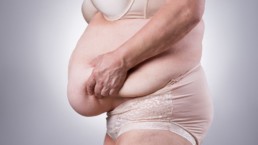Why Are You Still Hungry After Weight Loss Surgery?

Weight loss surgeries like a gastric sleeve or gastric bypass in Mexico are popular procedures that can help people lose a significant amount of weight. However, many patients report feeling hungry even after surgery. This situation can be very frustrating and lead to weight gain if not appropriately managed.
Read more: Gastric Sleeve Pre-Op and Post-Op Diet Guidelines
If you are struggling to manage hunger after weight loss surgery, read for some tips.
Understanding the Difference Between Hunger and Cravings
Two primary hormones, ghrelin, and leptin, control hunger. Ghrelin is secreted by the empty stomach and increases before meals. Leptin is secreted by fat cells and tells us when we have had enough to eat.
Bariatric surgery works by decreasing the size of the stomach pouch and re-routing the small intestine to bypass the stomach. This process results in a smaller volume of food that can be consumed and decreased absorption of calories and nutrients.
Reasons for Constant Hunger Pangs Post Surgery
For some people, this may also result in feeling hungry even after eating what would typically be a satisfying meal. There are several reasons why this may happen:
1) You Are Not Eating Enough Protein
Proteins are the building blocks of the body. They are essential for cell growth, tissue repair, and the production of enzymes and hormones. Protein needs are higher after weight loss surgery because your body is trying to heal and rebuild muscle mass.
If you are not eating enough protein, you will always feel hungry. Your body will start to break down muscle tissue for energy, leading to fatigue.
2) You Are Eating Quickly
Chewing and savoring your food helps to signal to your brain that you are eating. When you eat quickly, your brain doesn’t have time to process that you are consuming calories, and as a result, you may still feel hungry. Try slowing down at mealtime, chewing each bite 20-30 times, and putting your fork down between bites.
3) You Are Not Drinking Enough Fluids
Fluids help to fill you up and can help to stave off hunger. Make sure you drink at least 64 ounces of fluids per day and more if you are exercising.
Drinking water with each meal and snack is a great way to help keep yourself feeling full. Adding in sparkling water or unsweetened tea can also help to add some variety.
4) Your Physical Activities Have Increased
After bariatric surgery, many patients find that their energy levels have increased. This means they are more likely to want to be active and participate in physical activities. However, this also means they may burn more calories than before surgery. As a result, patients may feel hungrier because their bodies are trying to replenish the lost calories.
You must speak with your physician or dietitian to ensure you get enough calories and nutrients daily. They may recommend increasing your protein intake or adding additional snacks to help keep your hunger under control.
For the best weight loss surgery in Mexico, contact Hospital BC. Our surgeons and dieticians are experienced in helping patients achieve their desired results. We will help you understand what to expect after surgery and how to make the necessary lifestyle changes.
How to Effectively Reduce Scarring After Gastric Sleeve Surgery?

With rising obesity and overweight rates, many people turn to weight loss surgery as a last resort. One of the popular weight loss surgeries is gastric sleeve surgery. This surgery removes a large portion of the stomach, resulting in less food intake and weight loss. However, one of the side effects of VSG surgery is scarring.
Scarring is the body’s natural way of healing. When the skin is broken, the body produces collagen to repair the area.
Here are the dos and don’ts to help you minimize scarring after gastric sleeve surgery.
1. Use a Silicone Scar Sheet
During a bariatric sleeve surgery, a long incision is made to reach and remove a portion of the stomach. It leaves a large, visible scar that can be noticeable. While there are many ways to help minimize the appearance of scars, one of the most effective is to use a silicone scar sheet.
It is essential to start using the scar sheet as soon as the incision has healed and been checked by your doctor. The sheet protects the scar from dirt and other irritants that can cause the scar to become inflamed. It helps to keep the area moisturized, which is essential in healing.
2. Keep the Surgical Sites Clean
You will need to keep your surgical sites clean and dry for the first two weeks after surgery. During this time, you should:
- Gently clean the incisions with a bar of mild soap and water.
- Apply an antibiotic ointment to the incisions if recommended by your surgeon.
- Cover the incisions with a clean, dry bandage.
After two weeks, you can shower as usual. Be sure to pat the incisions dry afterward.
It is essential to keep an eye on your incisions for any signs of infection, such as redness, swelling, or discharge. If you notice these signs, please contact your surgeon.
If you are unhappy with the results of your surgery, you may wonder if there is a revision or scar revision surgery procedure that can help. A gastric bypass to gastric sleeve revision is a complicated surgery that an experienced bariatric surgeon should only perform.
Read more: Is It Possible to Get Gastric Sleeve Surgery Twice?
3. Eat Foods High in Vitamin C and E
Vitamin C and E help to support the skin’s natural healing process. Foods high in vitamin C include oranges, grapefruits, strawberries, and Brussels sprouts.
Foods high in vitamin E include nuts, seeds, and spinach.
Fad diets should be avoided following surgery as they can deplete the body of essential nutrients needed for healing. A well-balanced diet that includes lean protein, vegetables, fruits, and whole grains is best.
4. Drink Plenty of Water
It is essential to stay hydrated after surgery. Drinking plenty of water is essential for many reasons, including to:
- prevent dehydration
- promote healing
- prevent constipation
- flush out toxins
5. Use Sunscreen
Sunscreens with SPF 30 or higher can help prevent the formation of scars. Be sure to apply sunscreen to any incisions, especially if you will be outdoors for an extended period.
Reapply sunscreen every two hours or as directed on the label. If swimming or sweating, you will need to reapply more frequently.
Hospital BC is one of the best places for gastric sleeve in Mexico. Our specialists are highly trained and experienced in performing this surgery.
Can You Get a Breast Lift Without the Implants?

A breast lift is a surgery that can raise and reshape breasts that have lost their firmness or shape due to aging, pregnancy, weight loss, or genetics. While most women choose to have breast implants inserted during their lift surgery for added volume and projection, it is possible to receive a breast lift without implants.
Read on how the two surgeries differ and what you can expect from a breast lift without implants.
What Is a Breast Lift Surgery and How Does It Work?
A breast lift is a plastic surgery procedure that helps to reshape and raise the breasts by removing excess skin and tightening the surrounding tissue. A breast lift aims to create a more youthful, uplifted appearance. A breast lift can be performed alone or in combination with other procedures such as breast implants or a reduction.
Post-delivery, women often seek a breast lift to improve their breastfeeding experience. The procedure can perk up breasts that have been stretched and saggy after pregnancy and nursing.
Read more: Breastfeeding After a Breast Lift: Is It Possible?
Several techniques can be used for a breast lift, and your plastic surgeon in Tijuana will determine the best approach based on your individual goals and anatomy.
1) Incisions are made around the areola, down to the crease beneath the breast, and sometimes along the crease itself. This technique is called a vertical or lollipop incision.
2) An anchor-shaped incision is made around the areola, down to the crease beneath the breast, and then along the crease. The skin is then lifted, and any excess tissue is removed. The remaining skin is tightened and reshaped before being sutured closed.
3) A crescent incision is made around the top half of the areola. The skin is lifted off the breast tissue, and a small amount of skin is removed. The areola is then repositioned to a higher position on the breast.
What Are Breast Implants?
Implants are prosthetic devices that change a person’s breasts’ size, shape, and contour. They are also used to recreate the breast tissue after mastectomy or other surgery that has removed all or part of the breast. Breast implants are seen in different sizes and shapes. Some implants are filled with saline (salt water), while others are filled with silicone gel.
Can You Get a Breast Lift Without Implants?
The answer to this question depends on several factors:
a) Goals:
If your primary goal is to improve the shape of your breasts and achieve a more youthful appearance, then a breast lift without implants may be a good option for you. It is especially true if you have a small amount of skin laxity and good breast volume.
b) Amount of Skin and Tissue:
If you have a significant amount of skin laxity or very little breast tissue, a breast lift without implants will likely not give you the desired results. In these cases, a breast lift with implants is usually necessary to achieve the desired look.
c) Body Type:
A breast lift without implants may be a good option if you have a larger frame and carry more weight in your breasts. It is because there is often more tissue and skin to work with, which can help create a more aesthetically pleasing result.
d) Previous Surgeries:
Mastectomy patients often need implants to achieve a natural-looking result. In contrast, lumpectomy patients may need a boob lift and an implant depending on the tumor’s location and the amount of tissue removed.
For the best breast lift in Tijuana, contact Hospital BC. We are a top cosmetic surgery center that offers excellent results. Our surgeons are highly skilled and experienced in performing breast lifts without implants.
Standard Tummy Tuck VS Extended Tummy Tuck

Everyone dreams of having a tight and toned tummy, but sometimes diet and exercise aren’t enough. Excess fat and sagging skin around the abdominal area can be frustrating, especially if you’ve already tried everything to eliminate it.
That’s where a tummy tuck comes in. A tummy tuck, also known as an abdominoplasty, is a cosmetic surgery procedure that can help you achieve the flat stomach you’ve wanted. Tummy tuck is the sixth common cosmetic procedure performed in the United States.
There are two types of tummy tucks – standard and extended.
Read on to understand the differences between the two.
What Is Standard Tummy Tuck?
A standard tummy tuck is a cosmetic surgery procedure that removes excess skin and fat from the stomach area. It also tightens the abdominal muscles to create a flatter, more toned appearance. Standard tummy tucks are ideal for patients with excess skin and fat around their midsection and who want to improve their stomach’s overall shape and contour.
What Is Extended Tummy Tuck?
An extended tummy tuck is another variation of the standard tummy tuck. It involves incision around the hip bone instead of just above the pubic area. It allows the surgeon to remove excess skin and fat from the sides and back of the waist and the stomach area.
The procedure is ideal for people with a lot of loose skin and fat around their waistline and stomach. It is also suitable for people who have undergone massive weight loss through diet, exercise, or bariatric surgery.
Read more: How Long Does a Tummy Tuck Procedure Take From Intake to Dismissal
Common Factors of Differentiation Between Standard Tummy Tuck Or Extended Tummy Tuck
The Amount of Scarring That Will Be Left Behind
In the case of a standard tummy tuck, the incision is usually made along the bikini line. It means the scar will be hidden when wearing swimsuits or underwear. On the other hand, an extended tummy tuck will leave a scar that goes around the navel.
2. The Cost of the Surgery
The common reasons for the difference in the costs of the surgeries include:
- The length of the incision
- The amount of skin to be removed
- The need for liposuction
3. Recovery Time After Surgery
The recovery period after a standard tummy tuck is usually shorter than that of an extended tummy tuck. You can expect to take approximately two weeks before you feel comfortable resuming most of your normal activities. It may take up to six weeks before you feel fully recovered.
After an extended tummy tuck, you can expect a longer recovery period of approximately four to six weeks.
4. Risks Associated With the Surgery
Any weight loss surgery comes with the risk of infection, bleeding, and reaction to anesthesia. You may also experience numbness, pain, and scarring.
With standard and extended tummy tucks, the risks are the same. The only difference is that you have a longer incision with an extended tummy tuck.
It means there is a higher risk of infection and bleeding with an extended tummy tuck. You may also experience more pain and scarring. The best way to reduce your risk of complications is to choose a board-certified plastic surgeon with experience performing tummy tucks.
Hospital BC is the best place for a tummy tuck in Tijuana. We offer both standard and extended tummy tucks. We will help you choose the best option for your needs and goals.
Reference: The cosmetic surgery with the most complications – CBS News

